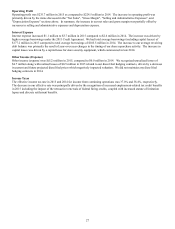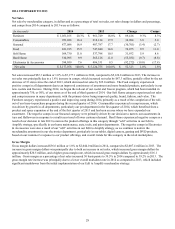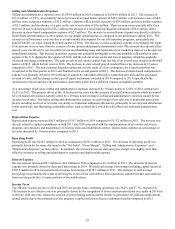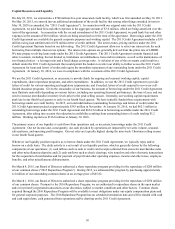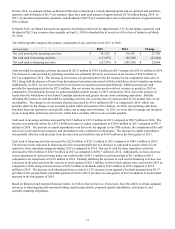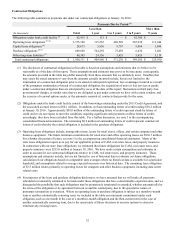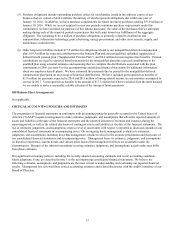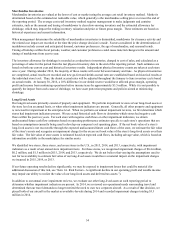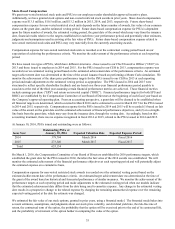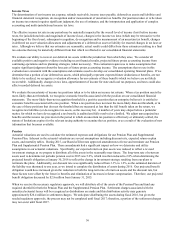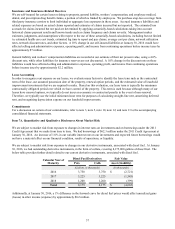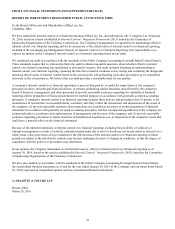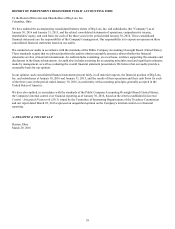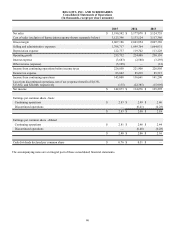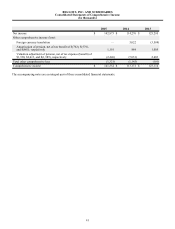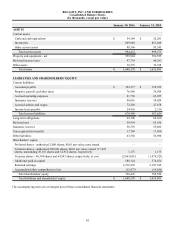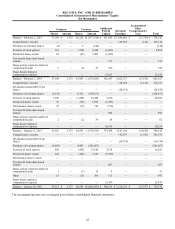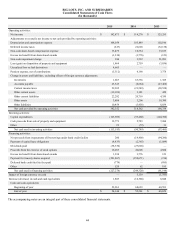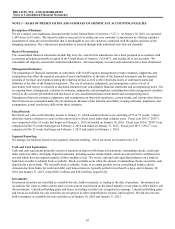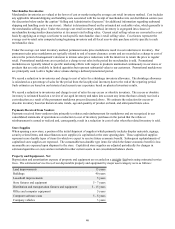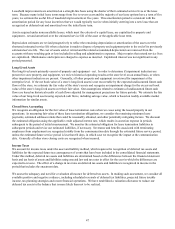Big Lots 2015 Annual Report Download - page 114
Download and view the complete annual report
Please find page 114 of the 2015 Big Lots annual report below. You can navigate through the pages in the report by either clicking on the pages listed below, or by using the keyword search tool below to find specific information within the annual report.
37
Insurance and Insurance-Related Reserves
We are self-insured for certain losses relating to property, general liability, workers’ compensation, and employee medical,
dental, and prescription drug benefit claims, a portion of which is funded by employees. We purchase stop-loss coverage from
third party insurance carriers to limit individual or aggregate loss exposures in these areas. Accrued insurance liabilities and
related expenses are based on actual claims reported and estimates of claims incurred but not reported. The estimated loss
accruals for claims incurred but not paid are determined by applying actuarially-based calculations taking into account
historical claims payment results and known trends such as claims frequency and claims severity. Management makes
estimates, judgments, and assumptions with respect to the use of these actuarially-based calculations, including but not limited
to, estimated health care cost trends, estimated lag time to report and pay claims, average cost per claim, network utilization
rates, network discount rates, and other factors. A 10% change in our self-insured liabilities at January 30, 2016 would have
affected selling and administrative expenses, operating profit, and income from continuing operations before income taxes by
approximately $7 million.
General liability and workers’ compensation liabilities are recorded at our estimate of their net present value, using a 4.0%
discount rate, while other liabilities for insurance reserves are not discounted. A 1.0% change in the discount rate on these
liabilities would have affected selling and administrative expenses, operating profit, and income from continuing operations
before income taxes by approximately $2.2 million.
Lease Accounting
In order to recognize rent expense on our leases, we evaluate many factors to identify the lease term such as the contractual
term of the lease, our assumed possession date of the property, renewal option periods, and the estimated value of leasehold
improvement investments that we are required to make. Based on this evaluation, our lease term is typically the minimum
contractually obligated period over which we have control of the property. This term is used because although many of our
leases have renewal options, we typically do not incur an economic or contractual penalty in the event of non-renewal.
Therefore, we typically use the initial minimum lease term for purposes of calculating straight-line rent, amortizing deferred
rent, and recognizing depreciation expense on our leasehold improvements.
Commitments
For a discussion on certain of our commitments, refer to note 3, note 5, note 10, note 12, and note 13 to the accompanying
consolidated financial statements.
Item 7A. Quantitative and Qualitative Disclosures About Market Risk
We are subject to market risk from exposure to changes in interest rates on investments and on borrowings under the 2011
Credit Agreement that we make from time to time. We had borrowings of $62.3 million under the 2011 Credit Agreement at
January 30, 2016. An increase of 1.0% in our variable interest rate on our investments and expected future borrowings would
not have a material effect on our financial condition, results of operations, or liquidity.
We are subject to market risk from exposure to changes in our derivative instruments, associated with diesel fuel. At January
30, 2016, we had outstanding derivative instruments, in the form of collars, covering 8,175,000 gallons of diesel fuel. The
below table provides further detail related to our current derivative instruments, associated with diesel fuel.
Calendar Year of
Maturity
Diesel Fuel Derivatives Fair Value
Puts Calls Asset (Liability)
(Gallons, in thousands) (In thousands)
2016 3,750 3,750 $ (2,721)
2017 3,225 3,225 (1,545)
2018 1,200 1,200 (399)
Total 8,175 8,175 $ (4,665)
Additionally, at January 30, 2016, a 1% difference in the forward curve for diesel fuel prices would affect unrealized gains
(losses) in other income (expense) by approximately $0.2 million.


